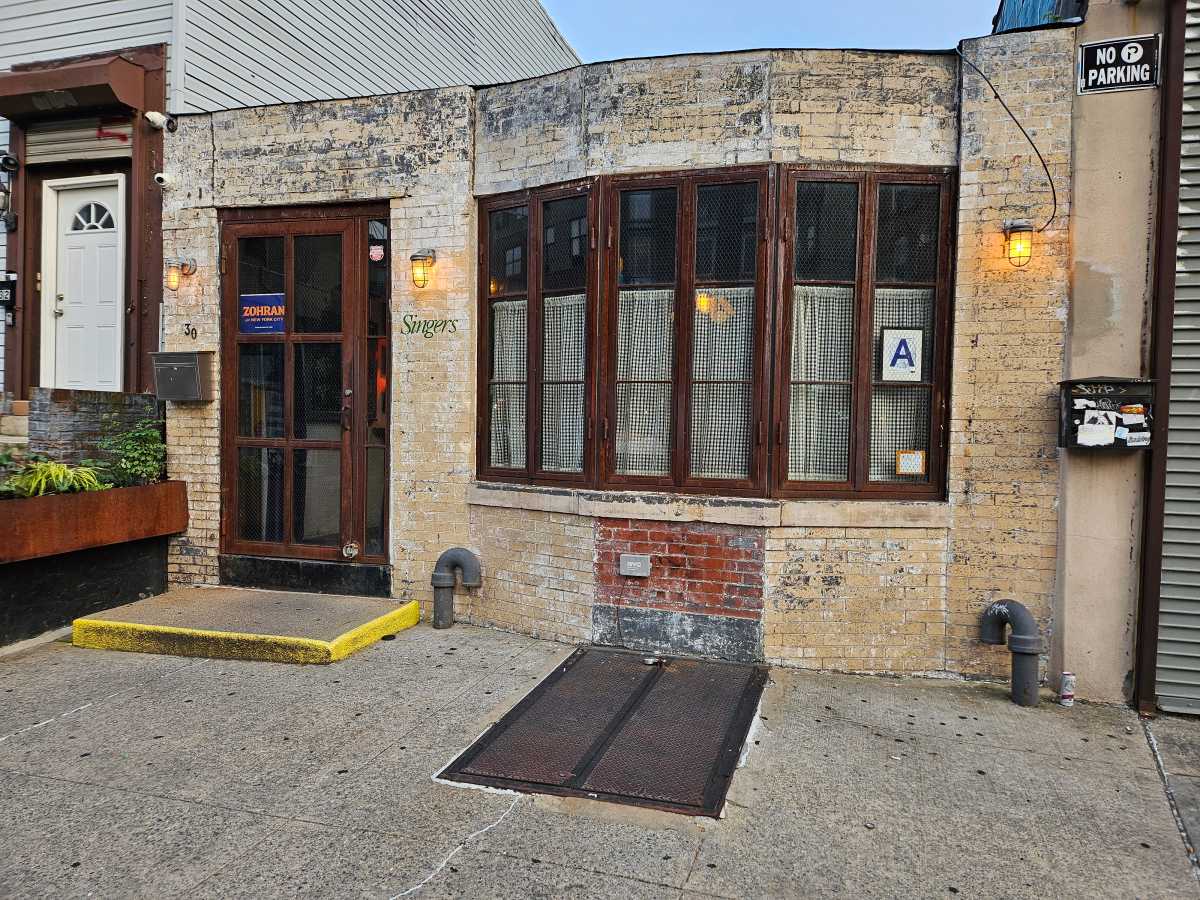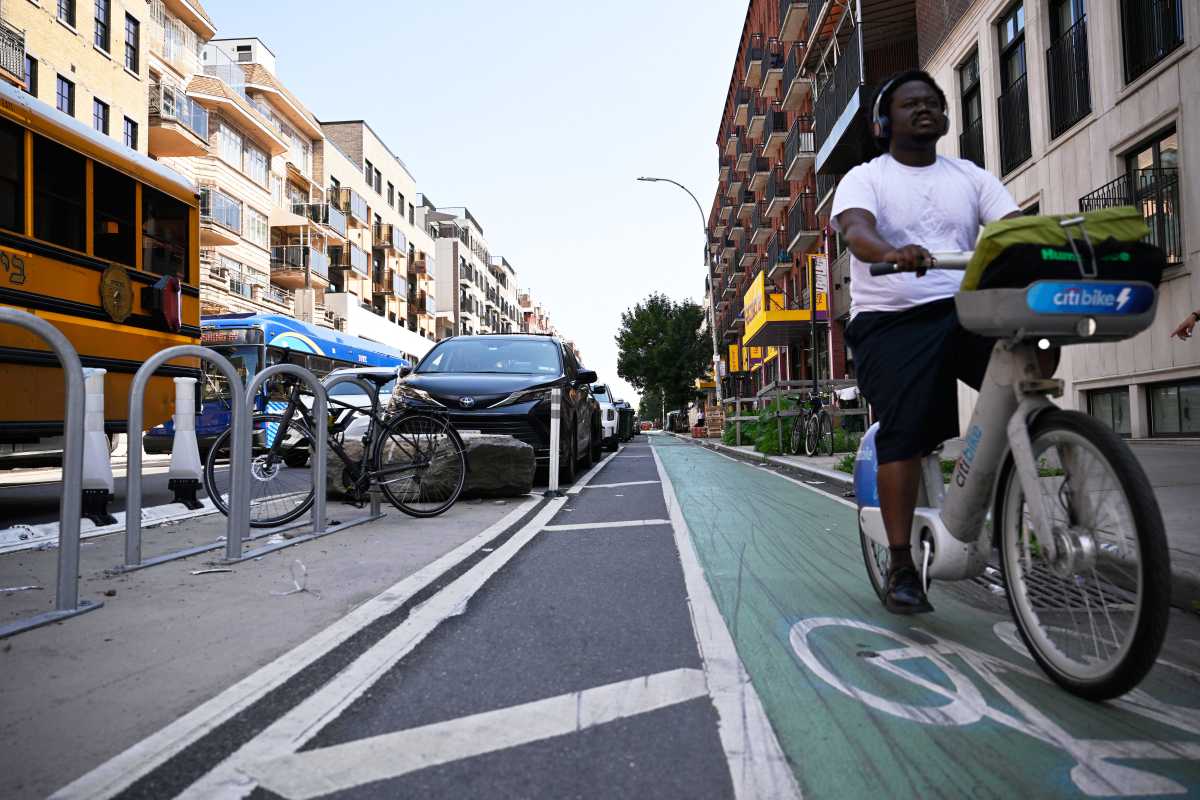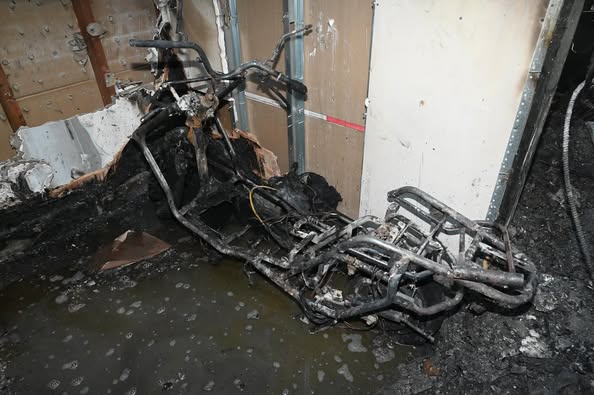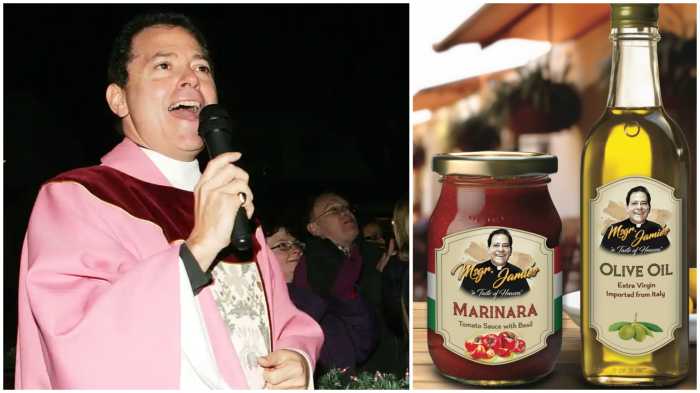By Jefferson Siegel
“…in an ocean or in a glass, cool water is such a gas.”
The Beach Boys sang their post-surfing paean to H2O, “Cool, Cool Water,” back in 1970, the same year that New York City began work on the largest capital construction project in the city’s history and possibly the largest public works project in the world, City Water Tunnel No. 3.
Thirty-six years later, another phase of construction is close to finishing, as underground blasting through bedrock is commencing under a West Village street to connect a water shaft from the water tunnel to the surface. Within two years, the shaft will be completed.
The blasting, scheduled to commence on Mon. April 24 was postponed a day because crews had not completed preparations, according to Mike Abba, resident engineer for 10 water shafts connected to the tunnel project in the Manhattan area.
The West Village shaft, officially named 27B, is situated in a rectangle of land on the Corporal John A. Seravalli Playground at Ganesvoort and Hudson Sts. Located behind fencing and a concrete wall, the space looks like any construction site. That is, until one notices the large hole in the ground.
Thirty feet in diameter, the shaft has already been dug down from the surface to a depth of about 75 feet. The inner walls are covered with a yellowish insulating foam. Pipes line the inside of the foam, circulating a chemical that freezes the surrounding earthen walls to a temperature of minus 16 degrees. The walls are kept frozen to prevent collapse.
A view of sandhogs working down in the water shaft, 75 feet below the surface of Seravalli Playground.
Four specially trained construction workers, known as sandhogs, from Local 147, stood at ground level around the shaft’s rim last Friday. Their topside jobs range from rigging and hoisting equipment up and down to signaling crane operators. On this sunny afternoon, the bottom of the shaft was barely visible. Far below, six moving green dots were discernable. These dots were the green hardhats worn by the other sandhogs working that day. One operated a drilling machine as others marked small holes and facilitated the drilling.
“It’s a job that you’ve got to be very careful working because there’s no place to run,” said Godwin McLeod, 52, a sandhog on the tunnel project since 1974. McLeod has the studied patience of someone involved in a dangerous profession. In addition to talking about the tunnel, he was aware of community residents’ concerns, from the encroachment on their playground to the blasting that was about to start.
“During the process of boring the shaft,” he continued, “you find a lot of people in the neighborhood complaining. In order to make things right, you’ve got to do these things,” he said of what is needed to properly build the water system.
Most of the sandhogs, and several local residents, agreed that the tunnel was a necessity for the neighboorhood and the city.
The water tunnel reached the West Village several years ago. In addition to the Ganesvoort St. shaft site, there are several other shafts in the Downtown area. One is in a lot at Hudson and Houston Sts., another is near Laight St. in Tribeca and a third is right by the Merchant’s House Museum on E. Fourth St. near Lafayette St.
Over the past year, work to excavate the Ganesvoort St. shaft involved digging from the ground down through 75 feet of soft earth. The phase that starts this week involves a series of controlled blasts 13 to 20 feet through bedrock below the bottom of this part of the shaft.
John Ryan, a sandhog for 10 years, stood looking down into the opening as he explained the next phase of digging.
“They’ll blast down to a certain depth,” he said, pointing toward the bottom, “about 140, 150 feet.” The walls will then be solidified with concrete. The shaft will taper inward slightly, from a diameter of 28 feet at the top to 24 feet at the bottom. “We might be blasting, at one stage, about a month or so,” Ryan continued. “Then stop, concrete it, and go back to blasting for a couple more weeks.”
Sometime soon the shaft will be completed, connecting with the tunnel, which runs 600 feet below the surface. When the tunnel is finally in use, sometime around 2020, water will rise up through the shaft into pipes for distribution throughout the neighborhood.
Brad Hoylman, chairperson of Community Board 2’s Traffic and Transportation Committee, is satisfied with the city’s communications to C.B. 2 and its residents.
“The community board has been in contact with the Department of Environmental Protection for well over a year,” Hoylman said. “I have to say, at this point, I’ve been satisfied with D.E.P.’s communication with the community. They send out notices in advance of different work.”
One of these notices hangs on the wall of the playground’s comfort station informing residents of the nature of the blasting and advising that a series of whistles means blasting is imminent. No more than two blasts a day are anticipated over the two-to-three-month period.
“In addition to their good communication,” Hoylman continued, “they’ve offered a remediation package at the Ganesvoort site, which includes renovation of the playground and repairing and beautifying the street” after the project is completed.
The playground is a popular destination for locals, with a children’s play area, basketball hoops and well-maintained grounds.
“This is my refuge here and I take care of it like I take care of my own home,” said Chelsea resident Oz Jones, a volunteer who has maintained the newly renovated comfort station for the past five months.
Kathleen Deegan has worked assiduously to cultivate a showcase playground, despite the cranes towering over the playground’s northern end. She planted more than 400 tulips in the playground’s tree beds, painted the inside of the park’s office and makes sure the comfort station is clean.
Deegan, who moved to the neighborhood in 1963, is concerned with the tunnel’s impact on the playground’s denizens.
“It’s hard for the kids who are batting the ball,” she said. “They had more space to bat the ball; now it goes out of the playground” when they hit it.
Julie Culver keeps her ear to the community by maintaining the Horatio St. blog. One entry on the tunnel blasting is adorned with a dramatic photo of a fireball exploding.
“I know it’s necessary to keep clean water, which is really important,” Culver said. However, she admitted, “I’m a little nervous about what the impact of the noise is going to be.”
Project engineer Abba said they will keep on top of the noise.
“We have consulting engineers on board,” he said. “Anytime we blast, we monitor noise. We try not to exceed limits.” Abba said it may be possible for some residents to hear the blasts, but, it usually doesn’t last more than three to four seconds.
“Some buildings may feel vibrations too. We’re continuously monitoring to make sure nothing exceeds limits, structure-wise.”
Abba said there will be no more than two blasts on any given day.
Most of the shaft has already been done. In the initial work, a small 14-inch-diameter hole was bored from the surface down to the water tunnel. A drill shaft was then inserted through the hole and a blade attached at the bottom, which was used to cut the shaft through the bedrock, going from bottom to top. Debris fell down into the tunnel and was carted away through the tunnel.
Additional blasting is done to clear any rock left on the sides of the shaft after the drilling. Drilling from the bottom through the bedrock limited noise and disruption to neighbors, to the extent that most probably weren’t even aware the work was occurring.
The sandhogs working on the surface still need to break through the last 13 to 20 feet of bedrock to connect their part of the shaft to the one below. They will also do additional blasting to widen the shaft to the right diameter.






































